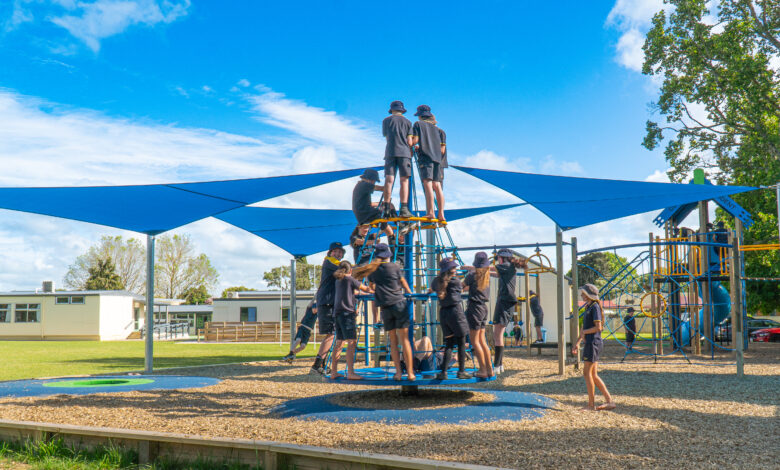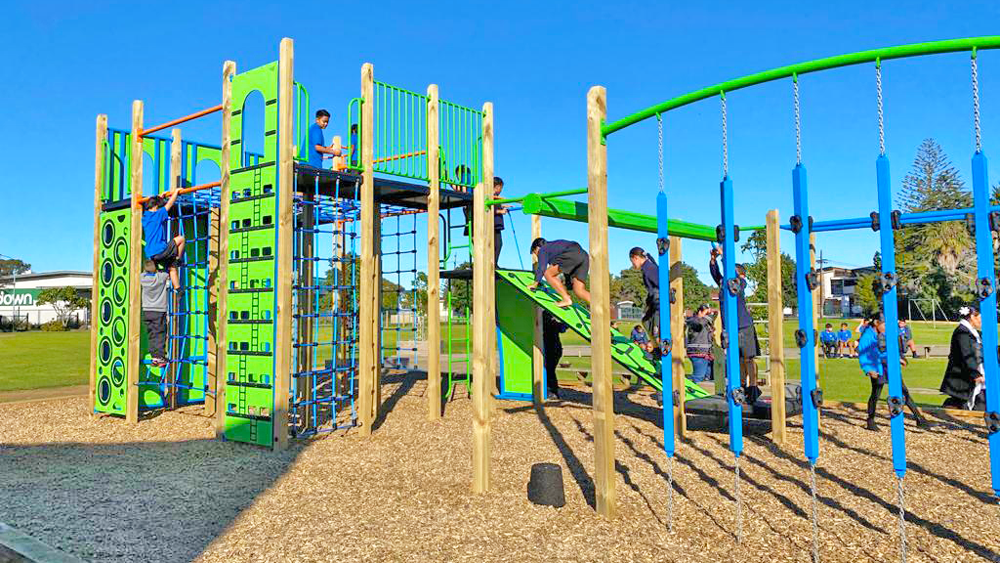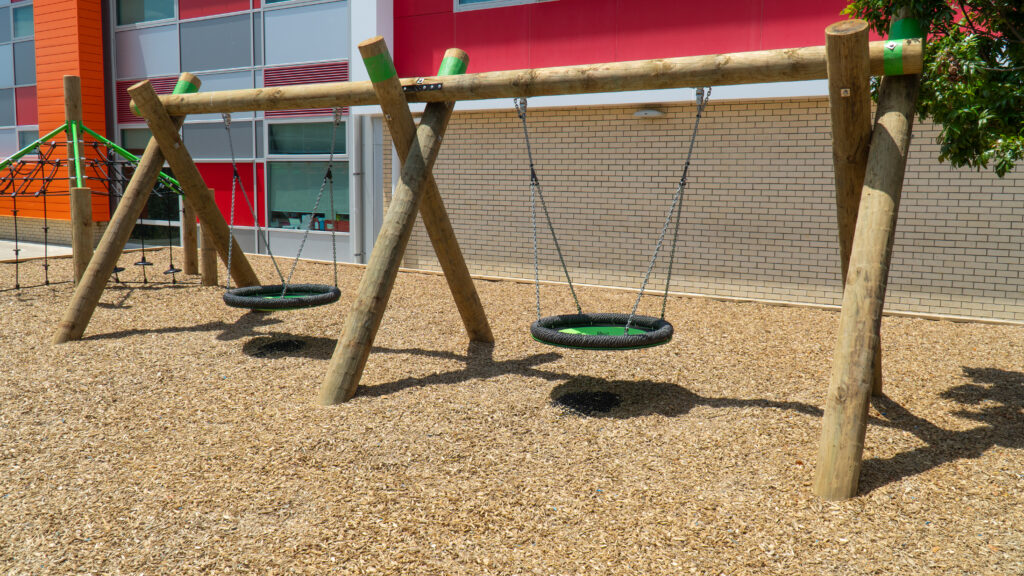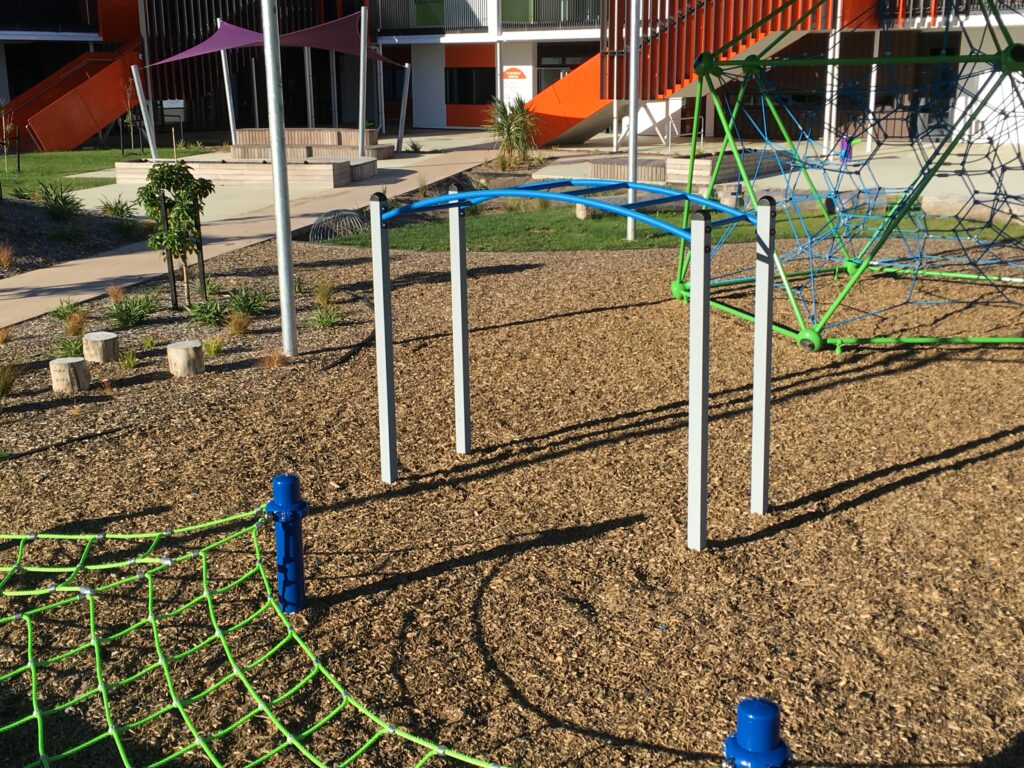
Play is universally recognised as an important part of childhood and development. Research in the field suggests that children play to explore their boundaries, discover the world around them and learn new skills. During play, children may refine their motor skills, social skills, hand-eye coordination, and problem-solving skills. With such rich evidence of the essential nature of play, playgrounds cannot be dismissed as simply a way to pass the time during lunch breaks. Instead, they are the locus of a different, yet crucial type of learning.
Read the Term 1 edition of School News HERE.
Playgrounds offer children exposure to many different sensory experiences, and qualitative research finds that this is what attracts children to playing on playgrounds. Having different sensory stimulations can also be important for children with sensory, social or emotional difficulties. Playgrounds offer children novel sensations such as being up high and are usually the intersection of many textures such as sand and grass. Children interact with playgrounds directly, indirectly and symbolically.
Increasingly, playground design is moving away from the “traditional” post-and-platform type, and more toward themed and adventure playgrounds. The latter involve purposefully leaving loose parts in the play area, such as tyres and other items adults may consider junk. This encourages creative, open-ended play in children, and can be enriching.

Recently, conversation about playground design has also focused on inclusivity, which recognises the essential nature of play and the rights of all children to access play. In 2012, Canadian researchers found that children with disabilities were often excluded from playing on playgrounds due to access barriers. This may cause them to lag developmentally. Playgrounds should therefore consider accessibility in flooring and equipment. Incorporating universal design can help overcome barriers between differently abled children, allowing them to play along-side each other. For example, entry to the playground should be accessible for all children, rather than having two separate entryways, such as a ramp and stairs, and there should be access to all playable parts of the playground. An inclusive playground also needs to be usable rather than simply accessible.
So, what are some key considerations when planning a new or improved play-area, and enhancing an outdoor environment to promote wellbeing? It is prudent to consider the basics before all else: shade, water, maintenance and budget. Shade is not only sensible for both hot and rainy days, it is also important for those with temperature regulation issues. Playground design should also complement the natural landscape, taking into consideration how features such as trees, boulders and slopes can be incorporated into the design.
As for safety standards, research in the New Zealand context has found that rates of injury on playgrounds are low overall, and rubber or bark surfacing is associated with a low rate of injuries. Padded flooring, although sensible for areas of fall risk, is inaccessible to wheelchair users, so it may be prudent to consider having varied flooring in play areas. Specific safety standards for playgrounds should be considered by the manufacturer.
Finally, playgrounds should be challenging for all ages, as older children use playgrounds too. Educators may also consider the key competencies of the NZC when looking at playground design, as play areas can enrich children’s development in unexpected ways.
How can you get the most out of your play space? School News asked industry experts their top tips for creating the ultimate play space for all young people.
Melissa Cowie, Playground Consultant with Park Supplies & Playgrounds said recent trends have leaned toward inclusivity, allowing all ages and abilities to be part of the fun. As a result, more all-inclusive items are being added into suppliers’ range and designs, allowing schools to integrate these items as part of a standard playground.

“A welcoming play environment needs to consider the long-term ‘play value’ children will get from the space. There are several important aspects to delivering play value and this includes physical development (does the equipment build strength and technique appropriate to the target age), social development (are there suitable group interaction areas as well as individual play areas) and imagination (are there fun and inspirational elements),” Cowie said.
“The aesthetics and fit with the local area are also very important. A well-designed space will combine these factors and ensure the installation delivers not just in the short term but for years to come.”
When it comes to safety needs, Cowie advises to leave it to the professionals. “Safety in a playground is not worth guessing as there are many regulations to abide by within the NZ Playground Safety Standards. Some general wear and tear checks can be taught to school maintenance staff, however, when in doubt contact your playground supplier.”
Michael Klaja from ReHarvest Timber Products Limited said playgrounds have changed dramatically over the past ten years. “They are becoming more like assault courses that challenge kids of all ages and make the whole experience more fun,” he said.

A mulch playground surfacing specialist, Michael says: “It never ceases to amaze me that a discarded waste product dumped in the yard can be completely re-engineered into premium mulch we see cushioning the fall for children across the North Island.
“There is a feel-good component for everyone involved in the process. Installing surfacing material made from recycling pallets that would have ended up in landfill, in round figures 100,000m3 that didn’t go into the ground every year, that in itself is good news and resonates with schools passionate about sustainability.”









